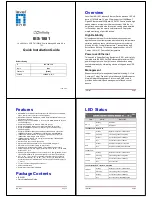
95
Appendix E Cabling recommendations
When an S10500 switch is mounted in a 19-inch standard rack, the interface cables are routed through
the cable management brackets, bound at cabling racks on chassis sides, and then routed up or down
to pass through the chassis top or the raised floor, depending on the available equipment room condition.
The power cables run along the two sides of the chassis and out of the chassis either from the chassis top
or the raised floor depending on the equipment room conditions (power distribution cabinet, lightning
protection box, and connector strip, and so on) of the exchange office.
General cabling requirements
Minimum curvature radius of cables
•
The curvature radius of an attached power cable, communication cable, or ribbon cable should be
at least five times the cable’s outer diameter. If the cable is frequently bent, plugged and unplugged,
the curvature radius should be at least seven times the cable's outer diameter.
•
The curvature radius of an ordinary attached coaxial cable should be at least seven times of the
cable's outer diameter. If the coaxial cable is frequently bent, plugged and unplugged, the
curvature radius should be at least 10 times the cable's outer diameter.
•
The curvature radius of a high-speed cable (for example, SFP+ cable) should be at least five times
of the cable's outer diameter. If the coaxial cable is frequently bent, plugged and unplugged, the
curvature radius should be at least 10 times the cable's outer diameter.
Minimum curvature radius of fibers
•
When the fiber is wrapped up around the cabling plate, the diameter of the cabling plate should
be at least 25 times the fiber's diameter.
•
When the fiber is being moved, the curvature radius of the fiber should be at least 20 times the
fiber's diameter.
•
When the fiber is attached, the curvature radius of the fiber should be at least 10 times the fiber's
diameter.
NOTE:
The fiber's diameter refers to the outer diameter of the fiber jacket. Typically, the diameter of a single-core
fiber is 0.9 mm (0.04 in), 2.0 mm (0.08 in), or 3.0 mm (0.12 in).
Prerequisites
Label cables before you route or bundle them.
Cable management guidelines
When you route and bundle up cables, follow these guidelines:
•
Bind and route the cables neatly inside the rack, and make sure they are not kinked or bent.













































